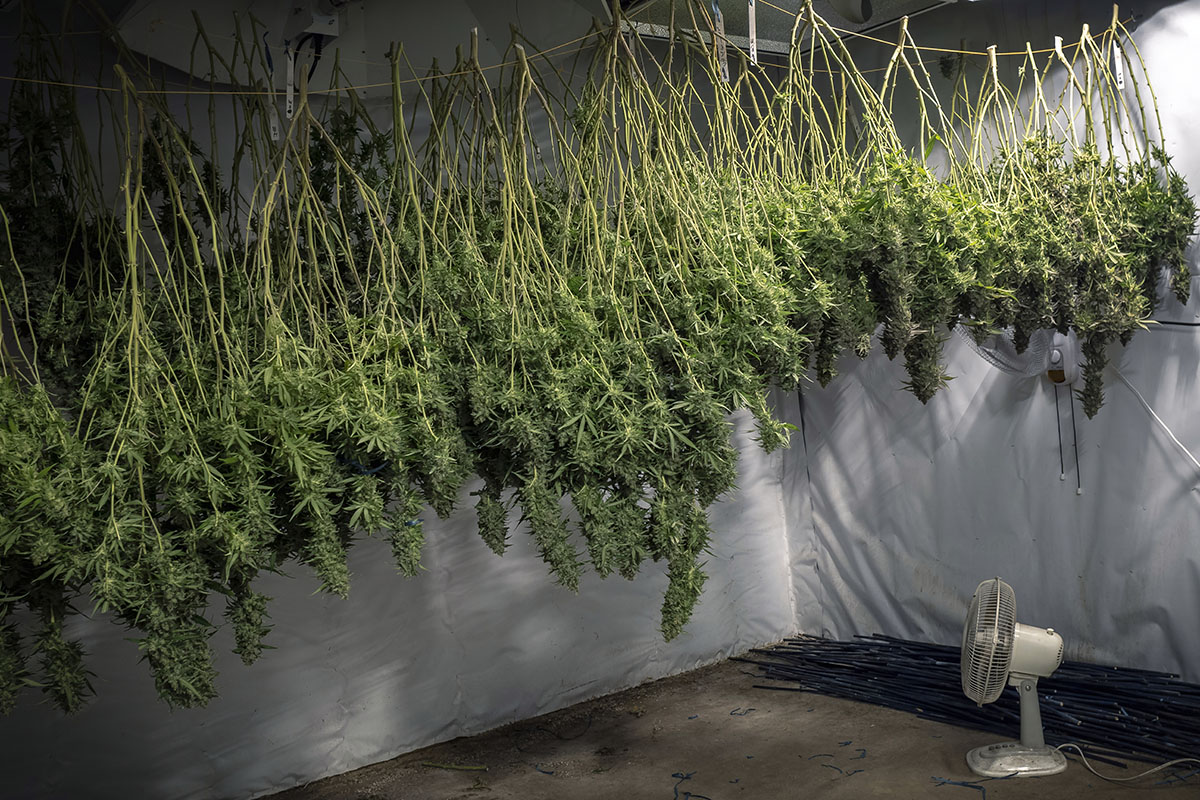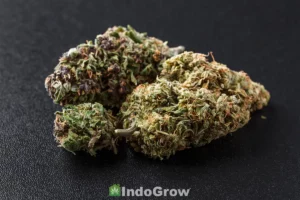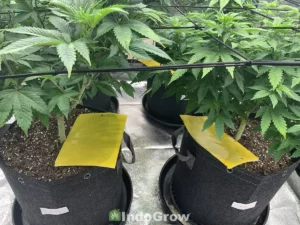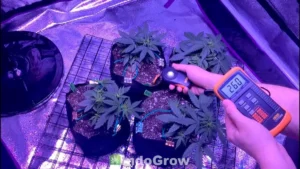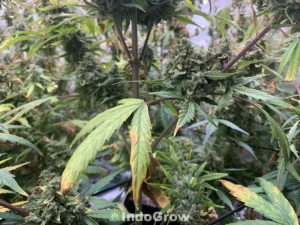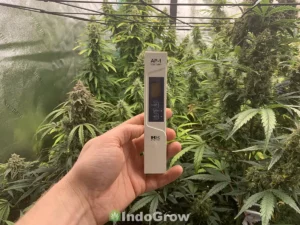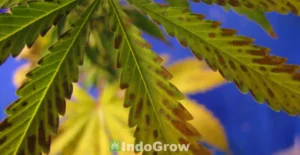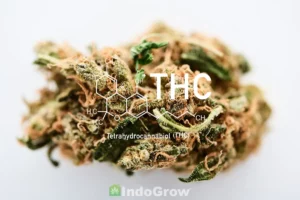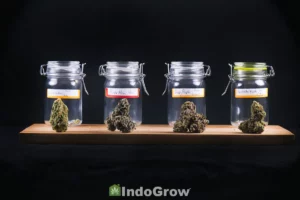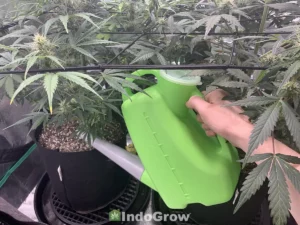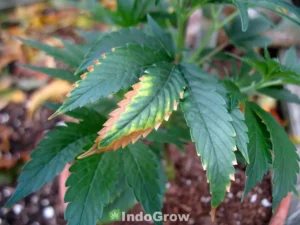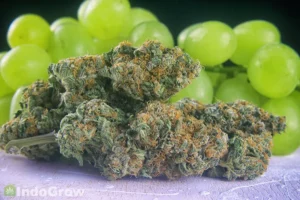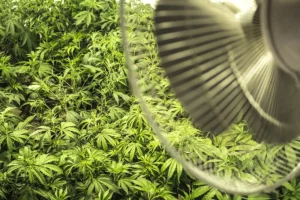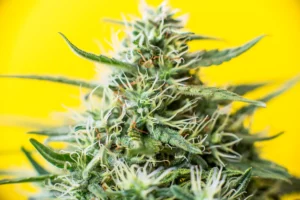When setting up an indoor grow room, you will likely want to select the highest yielding strains indoors to maximize your harvest. Considerations such as photoperiod vs autoflower, growing conditions, and the genetics of the exact strain you select can make a big difference in how large your final harvest is.
Read on to learn about some of the highest yielding photoperiod and autoflower strains, and learn some useful techniques to increase your harvest size no matter which strain you start with.
Table of Contents
- Cannabis Wet Weight vs Dry Weight
- How Much Can One Cannabis Plant Yield?
- Highest Yielding Photoperiod Strains (Feminized)
- Highest Yielding Autoflower Strains
- Grow Conditions for Maximum Yield
- LST Training Cannabis for Maximum Yield
- Trimming Cannabis for Maximum Yield
- Using CO2 to Increase Cannabis Yields
- Summary
Cannabis Wet Weight vs Dry Weight
Cannabis yields can be measured using either wet weight or dry weight. Wet weight is the weight of the buds immediately after harvest, before any drying or curing processes have begun. Dry weight is the weight of the finished buds after they have been dried and cured.
As water evaporates from the buds during drying and curing, they will become smaller and lighter. The finished dry weight of the buds is typically about 65-70% lower than the initial wet weight. While weighing your cannabis after harvest can be a great way to estimate how much final product you will end up with, dry weight is a more valuable metric when comparing strain yields overall.
How Much Can One Cannabis Plant Yield?
One of the largest factors in determining potential yield is whether you are growing photoperiod or autoflower strains. Photoperiods take an average of 6 weeks longer to grow than autoflowers, but their longer growing time leads to larger plants with more robust yields. Amongst photoperiods, there will be strains which have higher or lower yields, so be sure to do your research on the individual strains you plan to grow.
Besides the plant’s genetics, the environment will also play a significant role in your yield. Providing the plants with ideal lighting, humidity, temperature, and nutrients will increase the size of your harvest. Training techniques such as topping, LST, and scrogging will also optimize your plant to produce large numbers of buds.
For photoperiod plants, a single plant in high quality indoor conditions can yield anywhere between 10-35 ounces of wet buds, which will translate to between 3-10 ounces of dry buds after drying and curing. For a 4×4 grow tent housing 4 trained photoperiod plants, you can expect yields of around 24-32 ounces total in dry weight, or around 6-8 ounces dry weight per plant.
For autoflowering plants, you can expect yields of 1.5-8 ounces of buds per plant in wet weight. After drying and curing, this translates to between 0.5-2.5 ounces of dried buds. Although their yield per plant is significantly lower, autoflowers take up considerably less space than photoperiod plants, so 8-12 autoflower plants can be housed in the same 4×4 grow tent.
Highest Yielding Photoperiod Strains (Feminized)
Here is an overview of some of the photoperiod strains with the highest yields. Be sure to purchase feminized seeds or clones, as only female cannabis plants will produce buds.
Super Silver Haze
Super Silver Haze is a sativa dominant (80/20) strain first bred by Green House Seeds beginning in the 1990s. This strain is a cross between Haze, Skunk, and Northern Lights, and produces sticky, stinky buds with an average of 21% THC and 1% CBD. The high is described as energetic and uplifting, and is a great choice for reducing anxiety or nausea.
For home growers, Super Silver Haze is a relatively cheap and easy strain to begin growing. Although this strain can take a little longer to reach flowering, around 9-11 weeks, your efforts will be rewarded with a large yield of high quality sativa buds at harvest time.
Gold Leaf
Although the exact origins of the Gold Leaf strain are unknown, it is believed to be an indica dominant hybrid (60/40) of Cornbread and Purple Urkle. This citrusy, aromatic strain is prized for its broad terpene profile, which includes myrcene, bisabolol, and valencene among many others. Gold leaf produces a euphoric, energizing high with around 20% THC and 2% CBD.
Although this strain is known to be difficult to source for home grows, it is a highly rewarding plant to grow. Gold leaf produces short, bushy plants with eye-catching yellow leaf tips and sugar leaves.
Strawberry Kush
Strawberry Kush is a Sativa dominant hybrid (approximately 70/30) typically produced by crossing Strawberry Cough and OG Kush, although its genetics are known to vary somewhat from grower to grower. This strain averages 18% THC and less than 1% CBD, with dense nugs that have a flavor reminiscent of strawberry, musk, and pine. Strawberry kush produces a relaxing high that works well to treat anxiety, insomnia, and lack of appetite.
Strawberry Kush makes a good strain for beginners to grow, as its small, compact plants are relatively forgiving and flower within 8-9 weeks.
Chocolope
Chocolope, also known as D-Line, is a sativa dominant strain grown by DNA genetics. This strain crosses pure sativa Chocolate Thai with Cannalope Haze to create a potent and energizing sativa with flavor notes of chocolate, coffee, and musk. Chocolope produces a clear-headed, cerebral high with around 21% THC and less than 1% CBD.
These plants are considered difficult for novice growers, as Chocolope’s sativa lineage causes it to produce very tall plants that can be particularly sensitive to mold and fluctuations in nutrients. Additionally, Chocolope has a relatively long flowering time of 10-12 weeks. However, the large yields, quality cerebral high, and chocolatey flavor of Chocolope makes growing this unique strain a worthy challenge for many growers.
Big Bud
Big Bud is a classic indica dominant hybrid strain that has been available in the US since the 1980s. It is believed to be a cross between Afghani, Haze, and Northern lights. With moderate THC levels of around 18%, this strain is best known for its huge buds and dank, skunky smell. This strain produces a foggy, deeply relaxing high with almost psychedelic effects if smoked in large enough quantities.
As the name suggests, Big Bud produces a huge plant that can grow 6-7 feet tall in ideal conditions. Big Bud flowers in as little as 7-8 weeks, although its large, dense buds are prone to mold and must be dried and cured for longer than many other strains.
Highest Yielding Autoflower Strains
Although autoflowers do not produce as large a yield as photoperiod plants, their rapid growth rate and automatic flowering capabilities make them an attractive choice for many home growers. Below, you will find a collection of some of the autoflower strains with the highest yields.
Northern Lights Auto
Northern lights is a classic indica dominant strain (90/10) with sticky, sweet, and herbal buds. Produced by crossing Afghani and Thai landraces, this strain has average THC levels of 18% and CBD levels of 1%.
Northern lights Auto produces a small, compact plant that is ready to harvest after just two months. This plant is known to be forgiving of a wide variety of growing conditions, making it an ideal choice for novice growers.
Amnesia Haze Auto
Amnesia Haze is a Sativa dominant hybrid produced by crossing Haze with multiple landraces including Thai, Afghani, and Hawaiian. This strain has average THC levels of around 22%, with a strong cerebral high that can often be inspiring and mood boosting in the right setting.
Amnesia Haze Auto is an unusually large plant for an autoflower thanks to its sativa genetics. This strain takes about 65-70 days to mature, and produces a large harvest for an autoflower.
White Widow Auto
White widow is a well known hybrid strain first developed in the Netherlands in the 1990s, and is a cross between a Brazilian Sativa landrace and an Indian Indica landrace. With moderate THC values of around 15%, this strain is known to produce a euphoric, chatty, and creative high.
White Widow Autoflower is a dense, compact plant which is ready for harvest in between 75-85. Although this strain matures more slowly than some other autoflowers, it also produces an unusually large harvest.
Bruce Banner Auto
Bruce banner is a potent sativa dominant hybrid strain (60/40) produced by crossing Strawberry Diesel and OG Kush. This strain has THC levels of around 28% with a sweet and piney flavor.
Bruce Banner Autoflower will be ready for harvest after 10-11 weeks, and it produces a large harvest of chunky, trichome rich buds that pack a strong punch. The plant itself is tall yet compact and symmetrical, making its branches easy to manipulate.
Purple Punch Auto
Purple punch is an indica dominant hybrid strain (80/20) best known for its strong scent that is reminiscent of grape kool aid. Purple Punch is a low to moderate THC strain, with an average of 10-15% THC and 1% CBD. This strain is mood boosting and relaxing, making it perfect for pain relief or evening relaxation.
Purple Punch Autoflower matures rapidly, taking just 50-60 days to harvest. Despite this explosive growth rate, it also produces an above average yield of aromatic and highly colorful buds.
Grow Conditions for Maximum Yield
Besides the strain you choose to grow, the growing conditions such as temperature, humidity, water, nutrients, and pH level will have a significant influence on your harvest.
As a general rule, seedling and vegetative cannabis plants should be kept between 75-85 degrees fahrenheit during the day, with a drop of a few degrees at night. Humidity for seedlings should be high, around 80%, then humidity should be dropped to around 60% as the plants enter the vegetative stage.
During the late flowering stage, temperatures should drop to the upper 70s, and humidity should decrease by around 5% each week until it reaches 40%.
During all life stages, plants should be watered once the top two inches or so of soil is dry to the touch. Soak the plant until water runs out of the drainage holes in the bottom of the pot, then allow the plant to dry for around 5-7 days until the top layer of soil is once again dry.
Fertilizers can be added to your plant’s water to ensure they are receiving the proper nutrients. Read the directions on the fertilizers carefully to ensure that you do not over fertilize and damage your plants. In general, plants will need a higher ratio of nitrogen during the vegetative stage, and a higher ratio of phosphorus once they begin flowering.
Finally, pH raising or lowering fluids may be added to your water to optimize your plant’s soil pH. In order to uptake nutrients, cannabis plants should have a slightly acidic pH of 5.5-6.5. Be sure to test the water in your runoff trays to find your initial pH levels before attempting to alter the pH.
LST Training Cannabis for Maximum Yield
LST, or Low Stress Training, is a group of techniques used to train cannabis plants into more efficient growth patterns. You will find a few common training methods outlined below.
Topping Cannabis Plants
Topping cannabis plants is actually a form of high stress training, although it is often paired with other LST techniques. Topping involves pruning off the end of the mainstem and/or side branches in photoperiod plants. This techniques breaks the apical dominance of the plant and allows it to grow a larger number of horizontally oriented branches.
It is important to note that this technique can only be used on photoperiod plants, as autoflowers have too short of a growing period to recover from the stress of topping.
Photoperiod seedlings can be topped for the first time once they are about 4 weeks old and have at least 4-5 nodes. Additional rounds of topping can continue as the plant grows larger up until 2 weeks before inducing flowering. Do not attempt to top flowering plants, as their growth slows down dramatically once buds begin to form, and you will only reduce the total number of buds the plant produces by topping too late in the plant’s life cycle.
Scrogging Cannabis Plants
Scrogging, also known as Screen of Green, is one of the most popular LST techniques, and is often paired with topping to further sculpt your plants. Scrogging involves placing a trellis type net above the growing plants, then guiding one branch through each hole in the netting and tying them in place.
This technique maximizes light exposure to the plants by forcing them to grow an even, horizontal canopy. Once the plant is ready to flower, your grow area should look like an uninterrupted sea of green with large numbers of evenly spaced branches ready to produce buds.
Trimming Cannabis for Maximum Yield
Besides LST, using methods such as defoliation and lollipopping can increase the vitality of your plants and allow them to focus more of their energy on producing large, potent buds.
Defoliation:
Defoliation is the process of selectively removing leaves from your cannabis plant in order to increase airflow and light exposure. Growers may remove older fan leaves, especially those that are damaged or heavily shaded by the upper canopy so that the plant does not waste resources maintaining leaves that are not beneficial. Removing leaves that are growing very close to soil level can also increase airflow to the roots and reduce the risk of fungal infection.
Lollipopping:
Lollipopping is a specific type of defoliation that involves removing the foliage on the lower third of the plant. This process is typically done two weeks before flowering, with a second cleanup round two weeks into flowering. Removing lower foliage and small branches allows the plant to focus all its energy on the buds growing at the top of the plant where they are receiving more ideal lighting.
Lollipopping causes the plant to produce larger, denser buds at the top of the canopy. Although some small buds are removed along with the leaves and branches when lollipopping, these small “popcorn” buds are of lower quality and would likely never develop well due to lack of light.
Using CO2 to Increase Cannabis Yields
When done correctly, introducing more CO2 into your grow tent can produce healthier plants with larger yields. Increased CO2 levels allow the cannabis plants to photosynthesize more effectively, causing them to grow larger and stronger.
One product which can naturally increase the CO2 in your grow room is an ExHale CO2 bags. These bags of non fruiting mycelium produce large amounts of CO2 without the need for any additional machinery or equipment.
However, using CO2 increasing products will only be beneficial if your tent is very well sealed. In order to prevent CO2 from escaping, you will need to seal any cracks or passive vents and create a slight negative pressure inside the tent to keep air in.
Summary
The biggest factor in determining the final yield of your cannabis grow is whether you choose to grow photoperiod or autoflower strains. While photoperiod strains can produce a much larger quantity of buds, autoflowers are much smaller and faster growing. A single photoperiod plant may produce between 3-10 ounces of dried and cured buds, while a single autoflower plant may produce between 0.5-2.5 ounces.
If you choose to grow photoperiod strains, some solid high yielding options include Super Silver Haze, Gold Leaf, Strawberry Kush, Chocolope, and Big Bud. If you prefer the ease of growing autoflowers, Northern Lights Auto, Amnesia Haze Auto, White Widow Auto, Bruce Banner Auto, and Purple Punch Auto are some good high yield options.
Regardless of what strain you choose to grow, proper temperature, humidity, lighting, and nutrients are essential to your plants growing large and healthy. Employing techniques such as topping, scrogging, and lollipopping can also help increase your yields at harvest time.

Rocky Horton
Author
Rocky Horton is an experienced cannabis grower and the founder of IndoGrow. The IndoGrow editorial team has over four decades of combined growing experience. Learn more.

